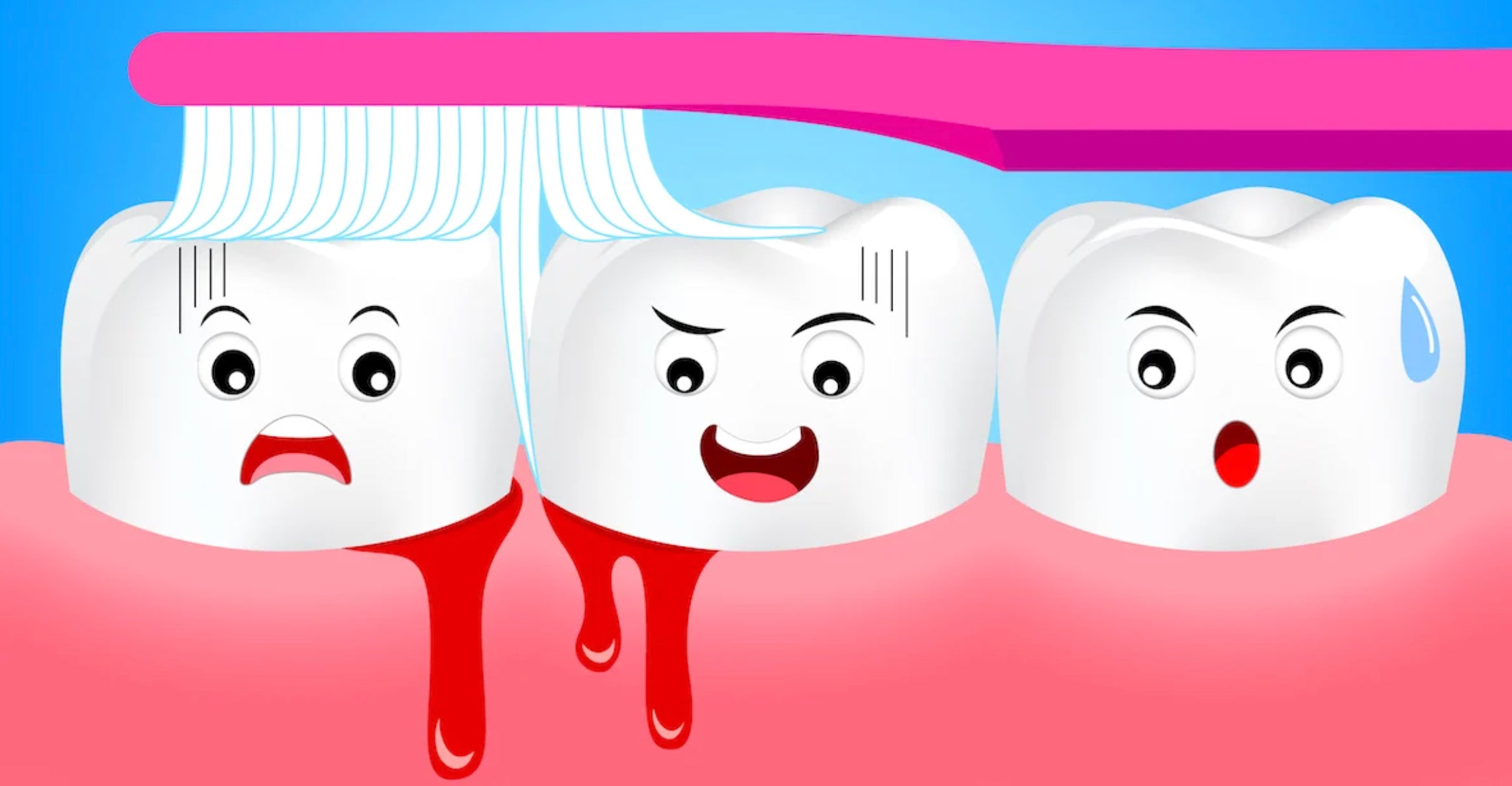Noticing blood on your toothbrush or pink streaks in the sink after brushing can be worrying. Bleeding gums are more common than you might think, and in most cases, they can be resolved with the right oral care routine.
Still, it’s important not to ignore the signs. Your gums may be telling you that something needs attention.
In this article, we’ll cover the most common causes of bleeding gums, what you can do to stop it and when it’s time to see a dentist.
What Causes Bleeding Gums?
Healthy gums should appear firm and pink, holding your teeth securely in place without pain or bleeding. When gums bleed, it’s usually a sign of irritation, inflammation or an underlying health issue. The most common reasons include:
1. Inadequate Oral Hygiene
The leading cause of bleeding gums is plaque build-up. Plaque is a sticky film of bacteria that accumulates on your teeth every day. If it isn’t removed through proper brushing and flossing, it hardens into tartar and irritates the gums, leading to inflammation (gingivitis) and bleeding.
2. Brushing Too Hard or Using a Hard Toothbrush
Brushing with excessive force or using a hard-bristled toothbrush can damage delicate gum tissue. Switching to a soft-bristled brush and using gentle circular motions can prevent unnecessary trauma.
3. Medications
Certain medications, such as blood thinners, can make gums more prone to bleeding. Always consult your doctor before making any changes to prescribed treatments.
4. Hormonal Changes
Pregnancy, puberty and menopause can increase gum sensitivity due to hormonal fluctuations, making bleeding more likely during these life stages.
5. Nutritional Deficiencies
Low levels of vitamin C and vitamin K can weaken gum health and affect healing. A balanced diet rich in fruits, vegetables and leafy greens supports stronger gums.
6. Underlying Health Conditions
Conditions, such as diabetes, heart disease and immune disorders, may worsen gum problems and reduce your body’s ability to fight infection.
7. Dry Mouth
Saliva naturally washes away bacteria. When your mouth is dry, often due to medications or health issues, bacteria thrive, leading to gum irritation and bleeding.
When to Worry About Bleeding Gums
Occasional mild bleeding when you floss after a break isn’t unusual. However, persistent bleeding accompanied by other symptoms may signal advanced gum disease (periodontitis). Watch out for the following warning signs:
-
Swollen, red, or tender gums that feel sore to the touch.
-
Bad breath that doesn’t improve with regular brushing.
-
Gums that are receding or pulling away from the teeth.
-
Loose teeth or noticeable changes in your bite.
-
Pus or ongoing pain around the gums.
If you notice any of these symptoms, it’s important to book a dental appointment right away. Treating gum disease early is much easier and more effective than delaying care.
Read Also: Top 7 Foods That Help Fight Gum Disease
How to Stop Bleeding Gums
Bleeding gums can feel uncomfortable and concerning, but in most cases, they can be managed with the right approach.
1. Improve Your Daily Oral Care Routine
-
Brush twice daily for two minutes with a soft toothbrush, focusing on the gum line.
-
Floss once a day to remove debris and plaque between teeth.
-
Use a gum-focused toothpaste such as ClinPro Toothpaste for added protection.
Even if your gums bleed when you first start flossing, don’t stop. Within a week of consistent care, bleeding usually decreases significantly.
2. Use Products that Aid Gum Health
-
Antibacterial mouthwash helps control bacteria and reduce inflammation
-
Sugar-free chewing gums, especially those with Recaldent Plus Gum, stimulate saliva flow and strengthen enamel while supporting gum health.
3. Adjust Lifestyle Habits
-
Eat a balanced diet rich in vitamins C and K.
-
Stay hydrated to prevent dry mouth.
-
Avoid smoking, which significantly worsens gum disease and slows healing.
4. Get Professional Dental Care
Regular dental visits are essential. A dentist can remove hardened tartar that brushing and flossing alone cannot. Routine check-ups every six months also help identify early signs of gum disease before they progress.
Preventing Bleeding Gums
The best way to deal with bleeding gums is prevention. Here’s a simple routine:
-
Morning: Brush gently for two minutes
-
After meals: Rinse with water or chew sugar-free gum
-
Evening: Brush and floss thoroughly before bed
-
Every 3 months: Replace your toothbrush
-
Every 6 months: See your dentist, even if nothing feels wrong
The Bottom Line
Bleeding gums are usually a warning sign of poor oral hygiene, but they can also be linked to health conditions, medications or lifestyle factors.
The good news is that, with proper care and the right products, most cases can be managed effectively.
Don’t ignore bleeding gums. Take steps today to restore your gum health and protect your smile. For clinically backed oral care solutions, visit BreezeCare and discover products designed to support healthier gums and fresher breath.











